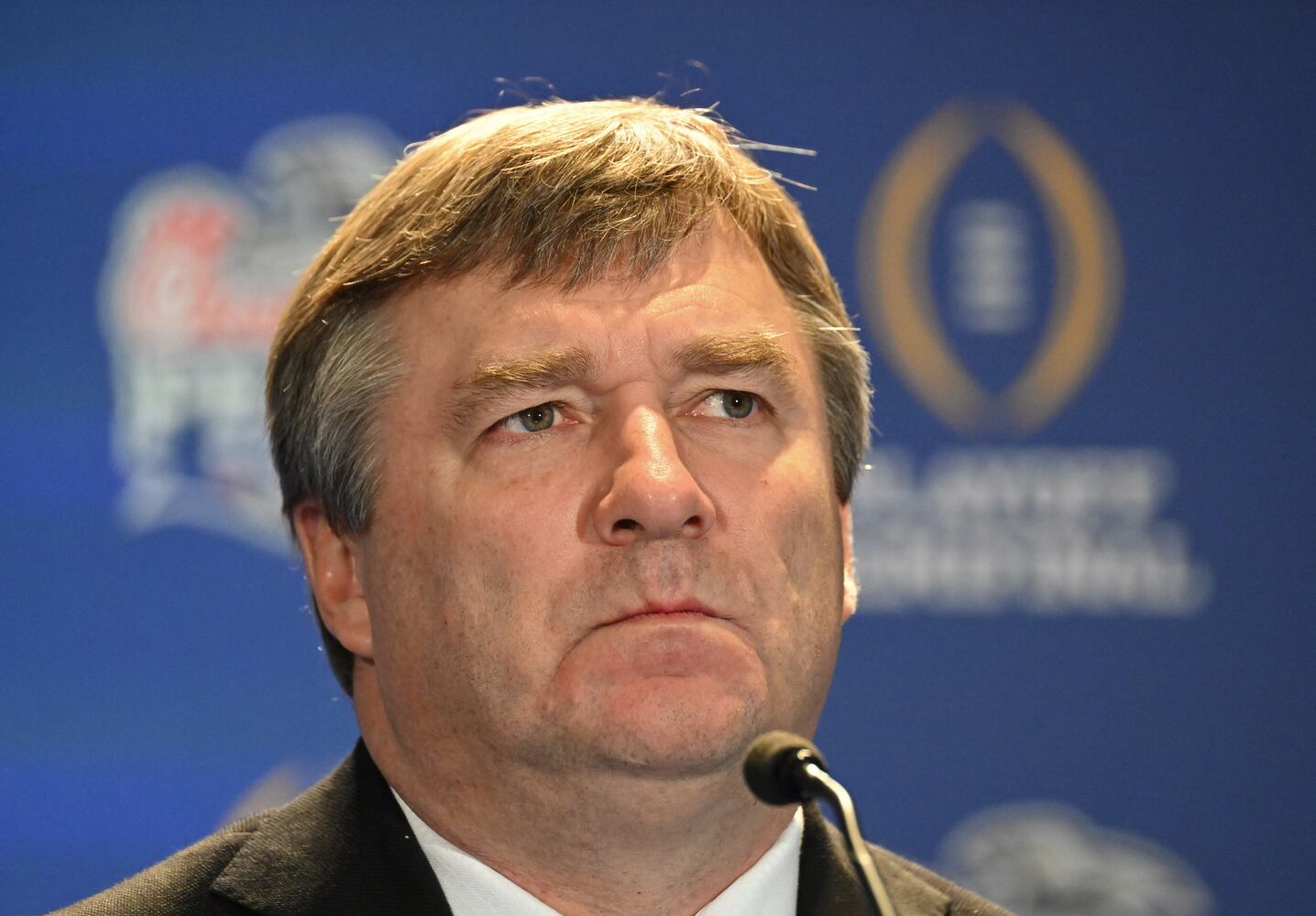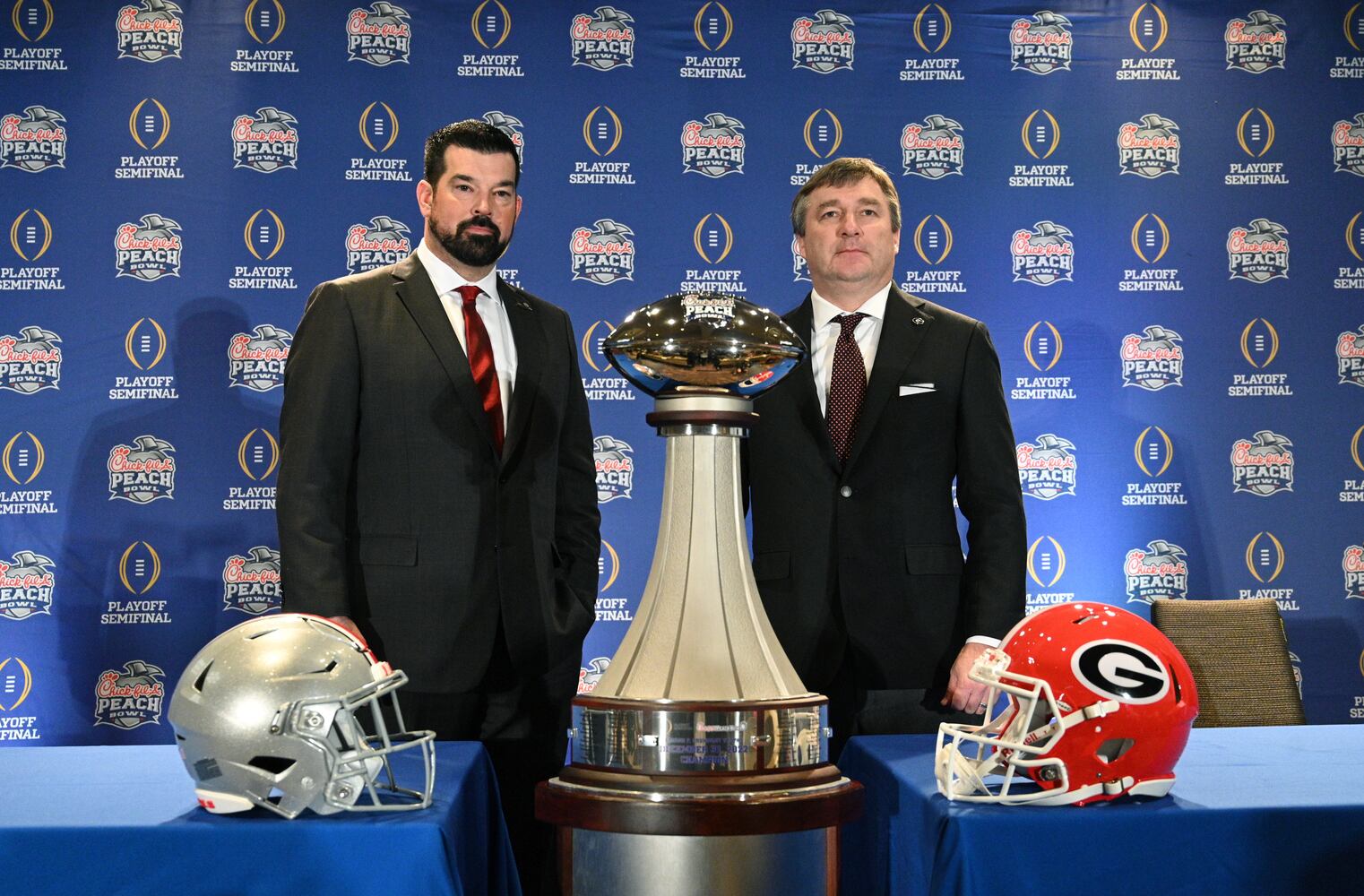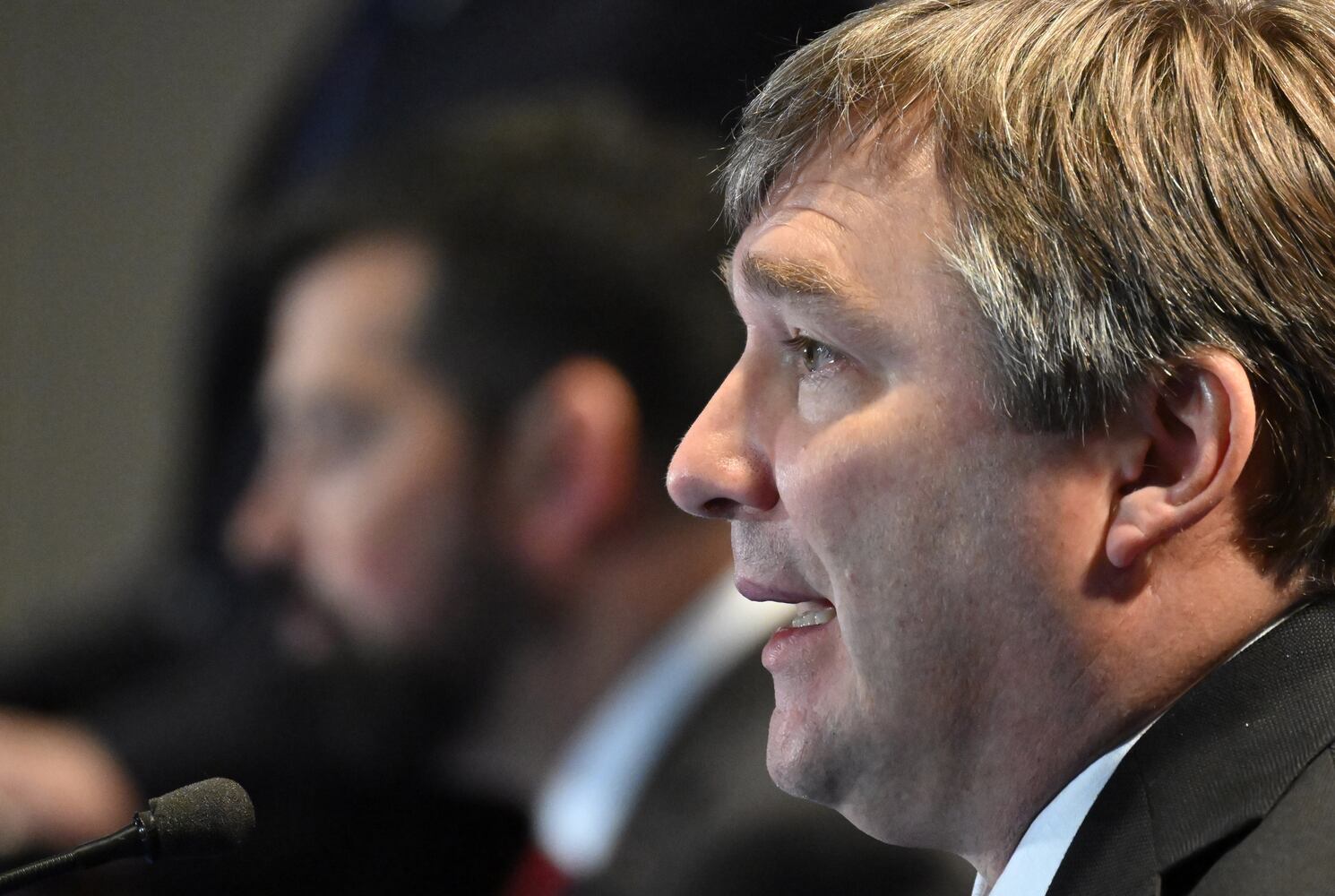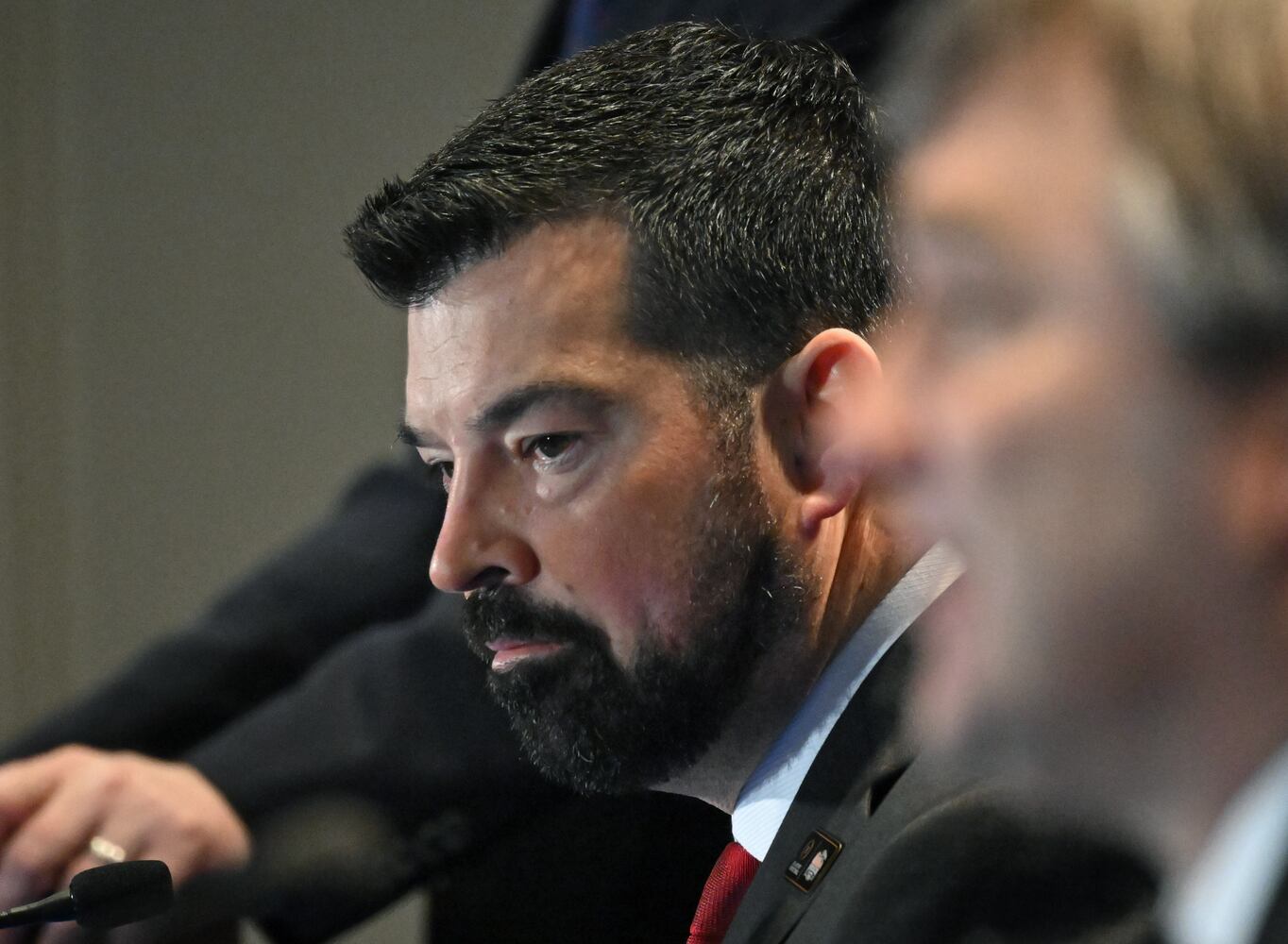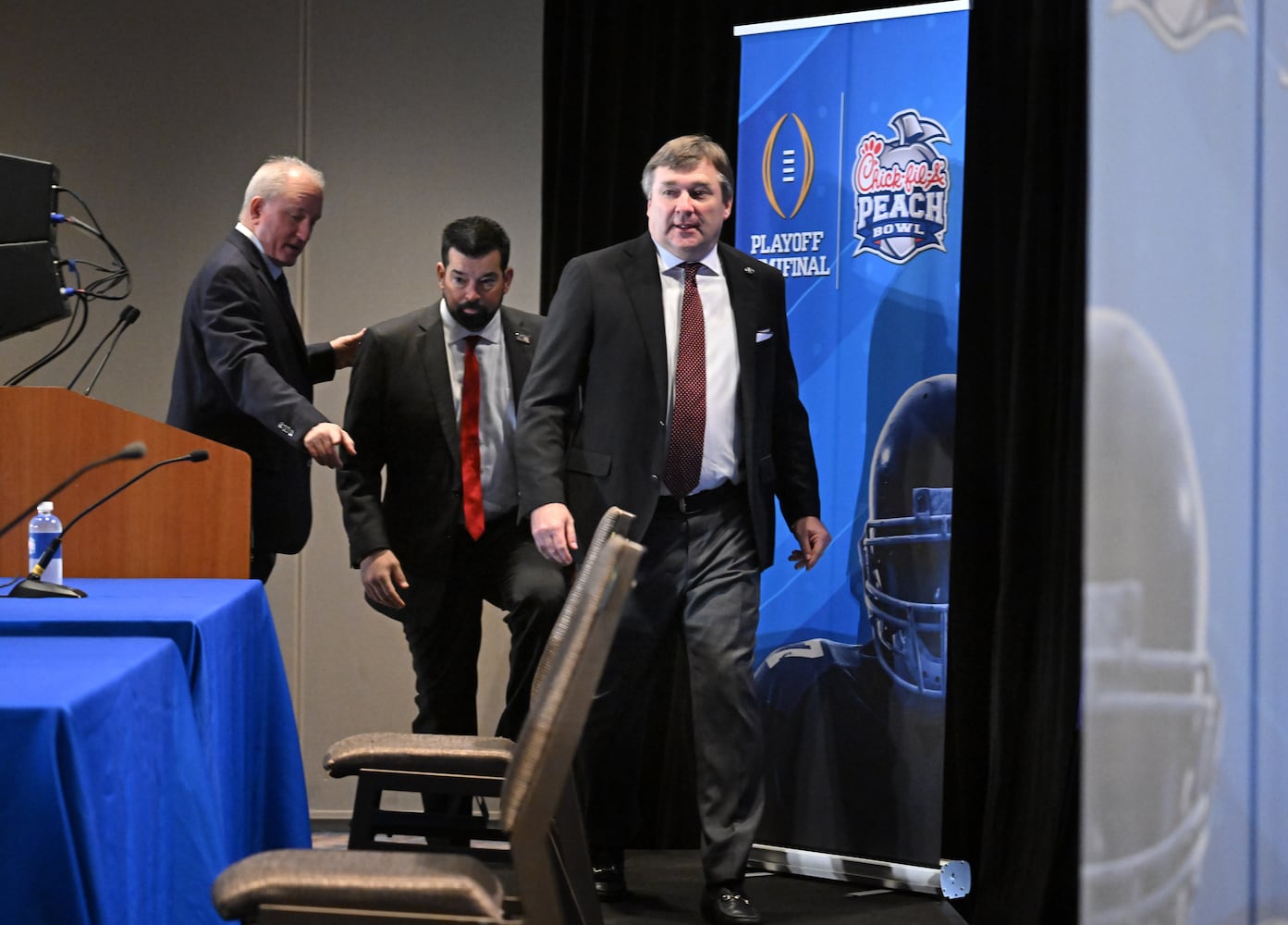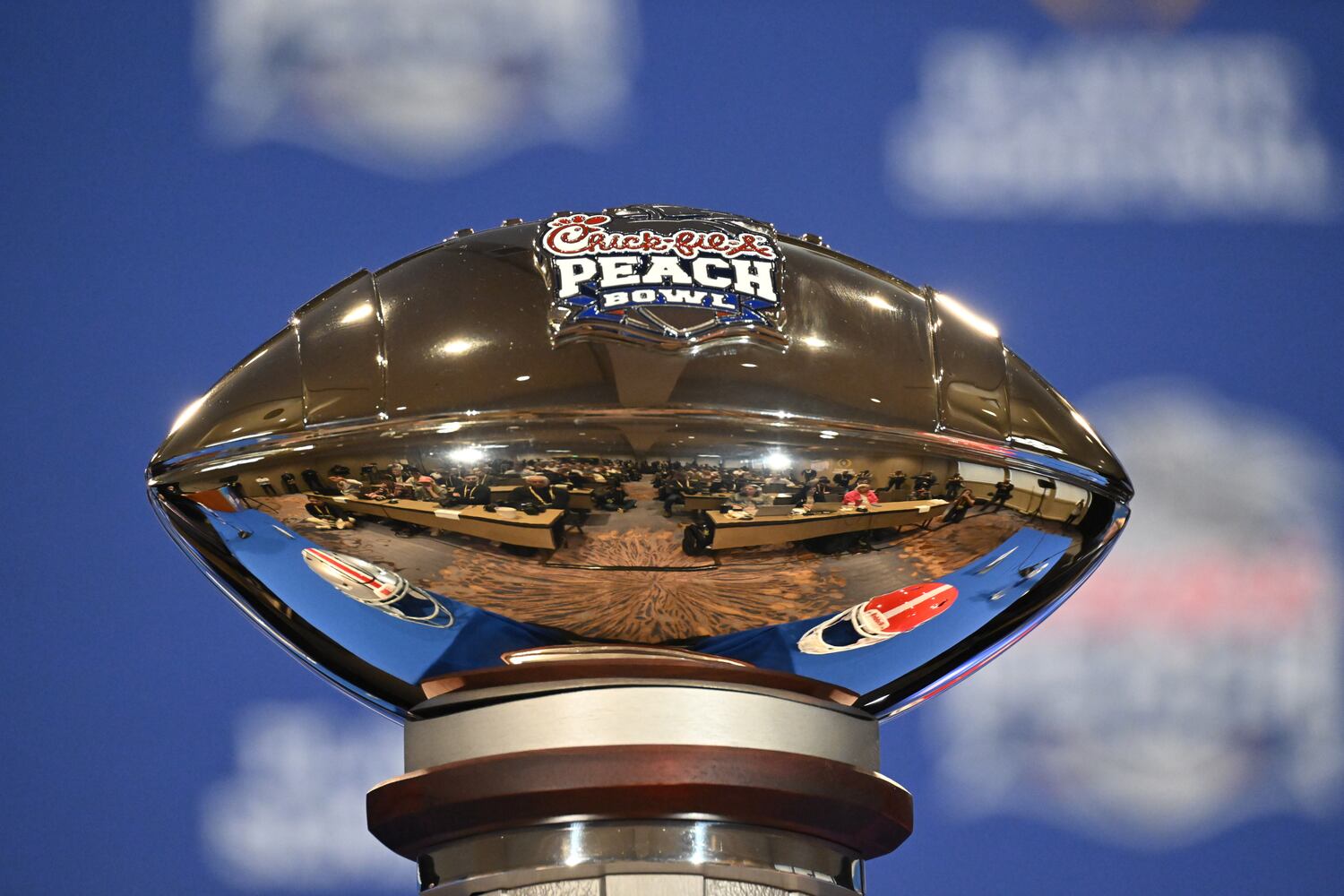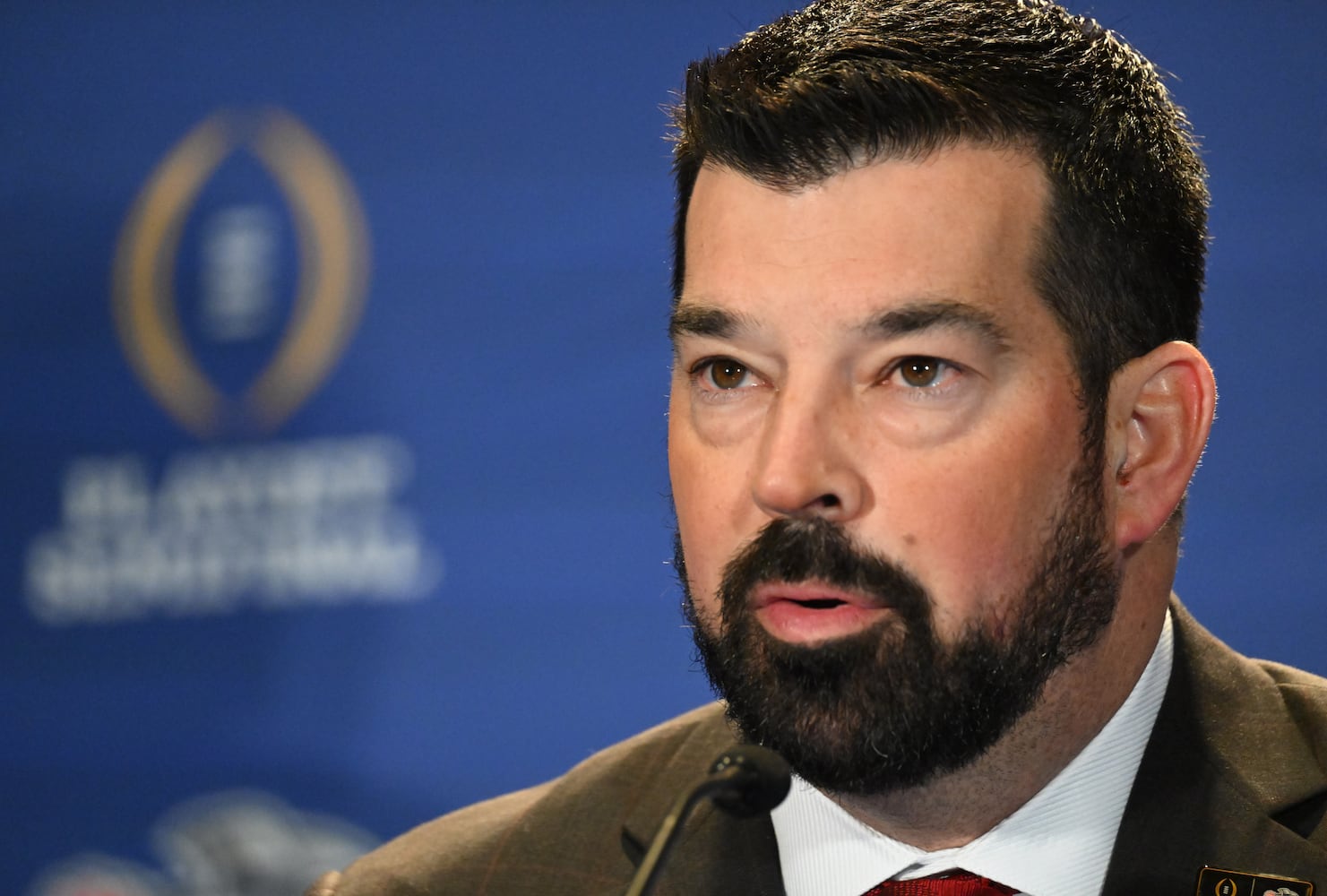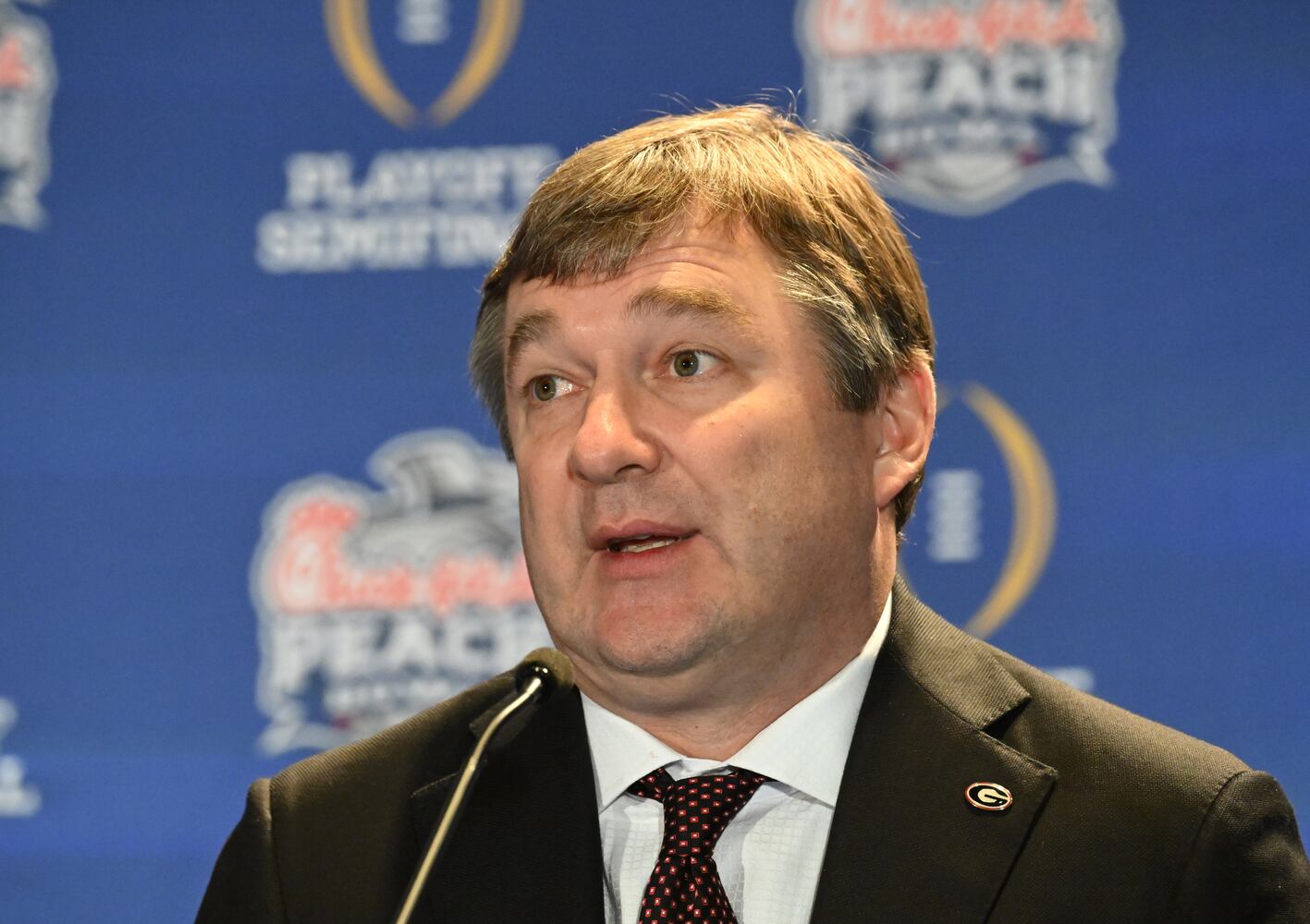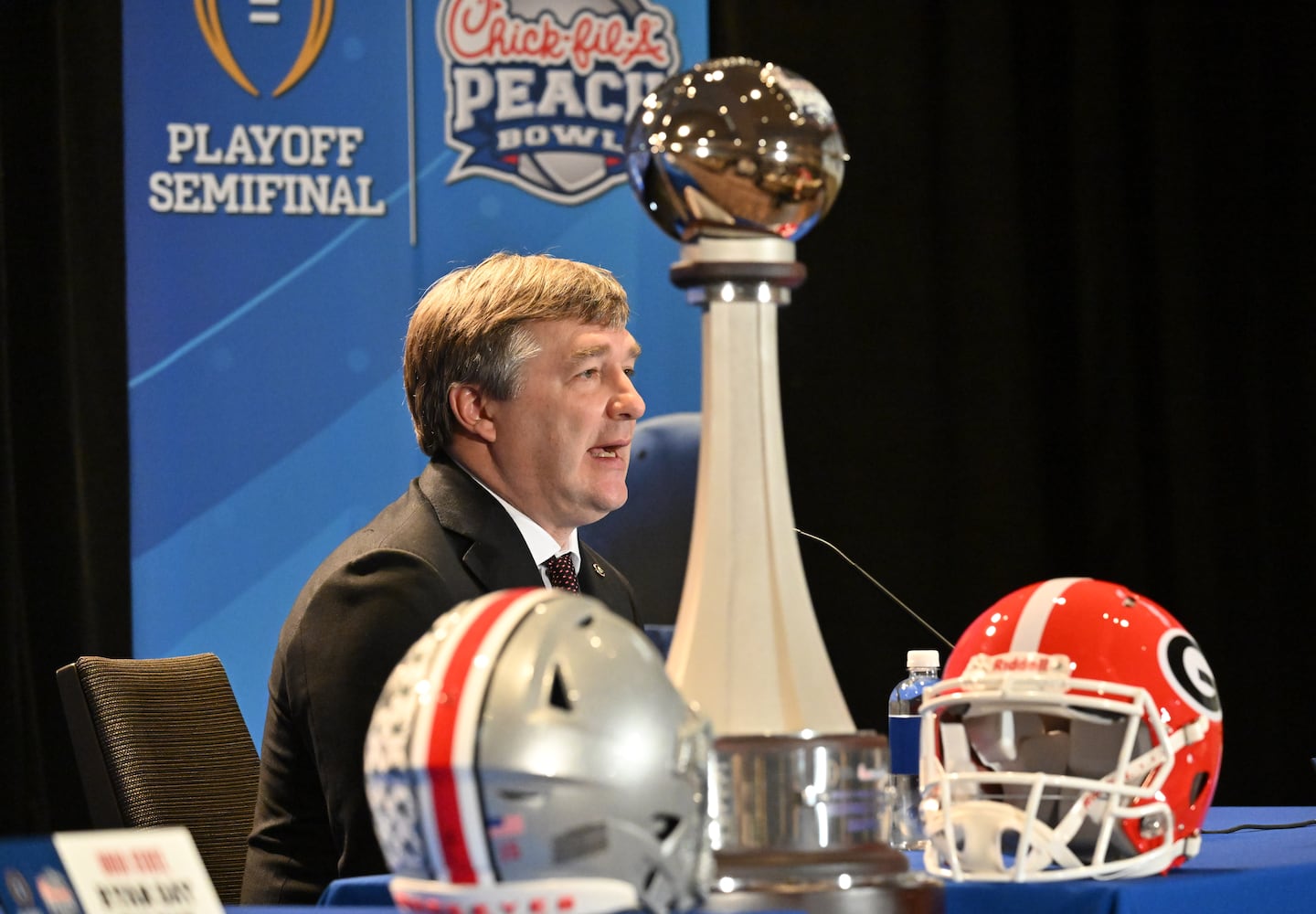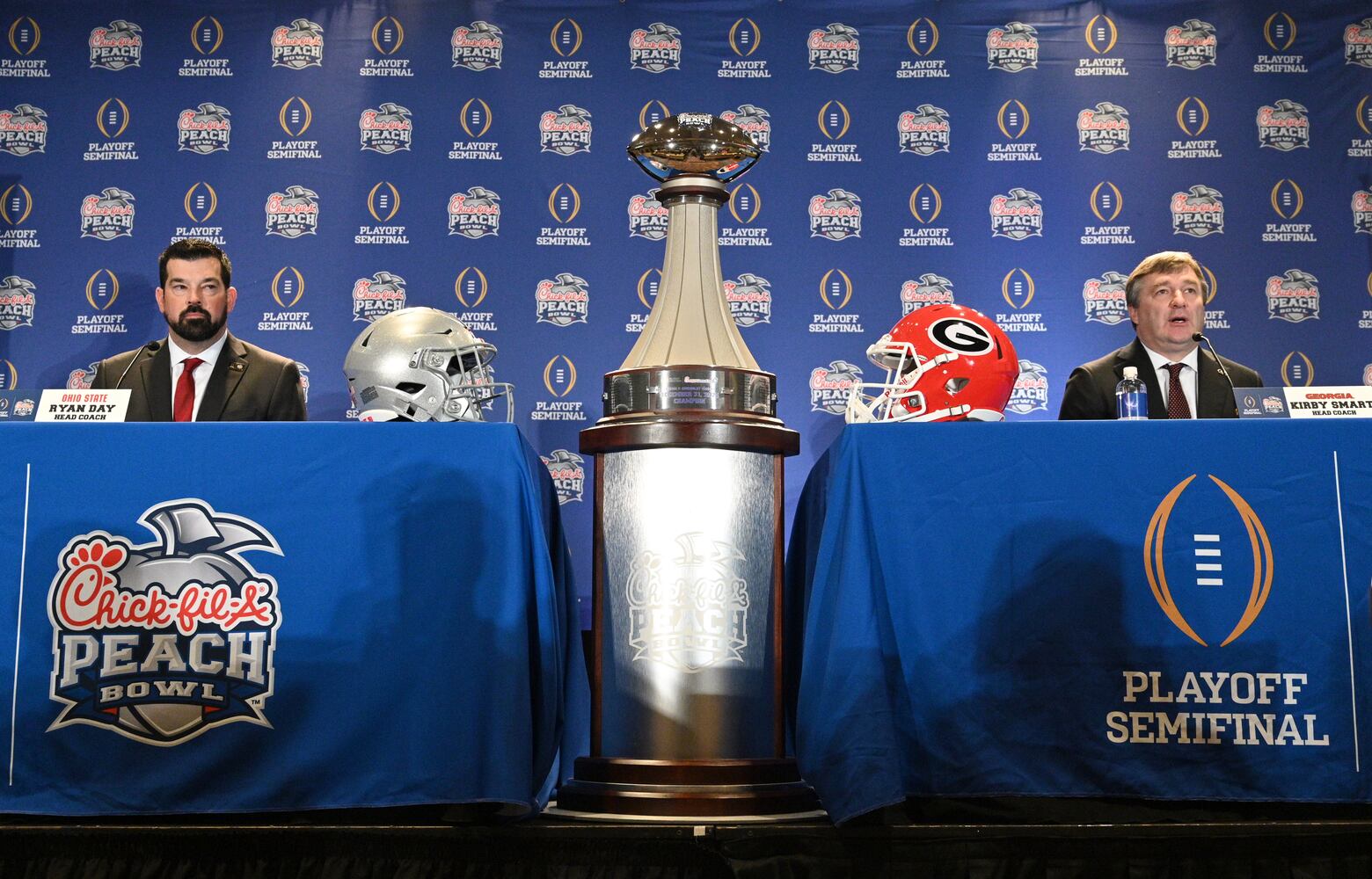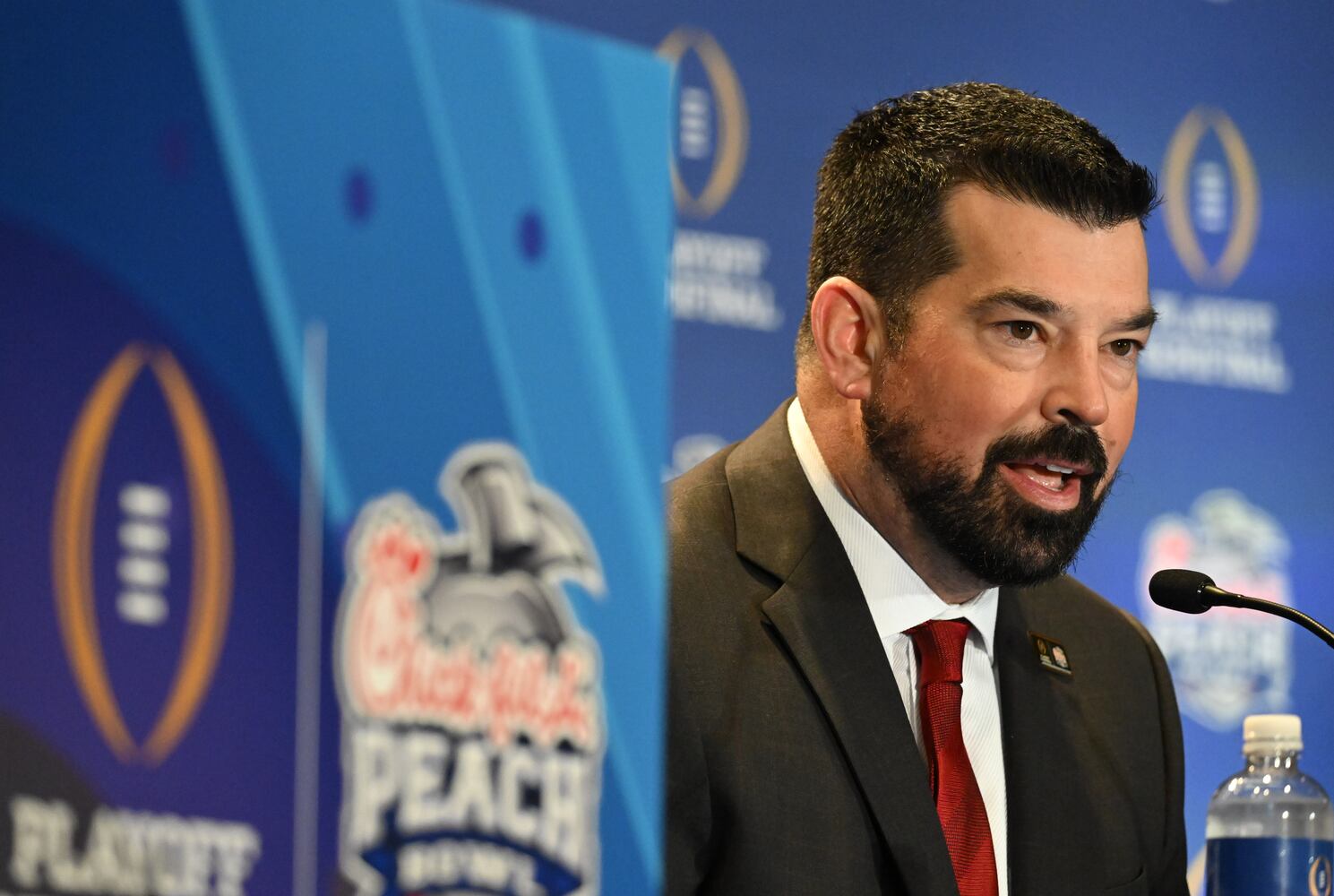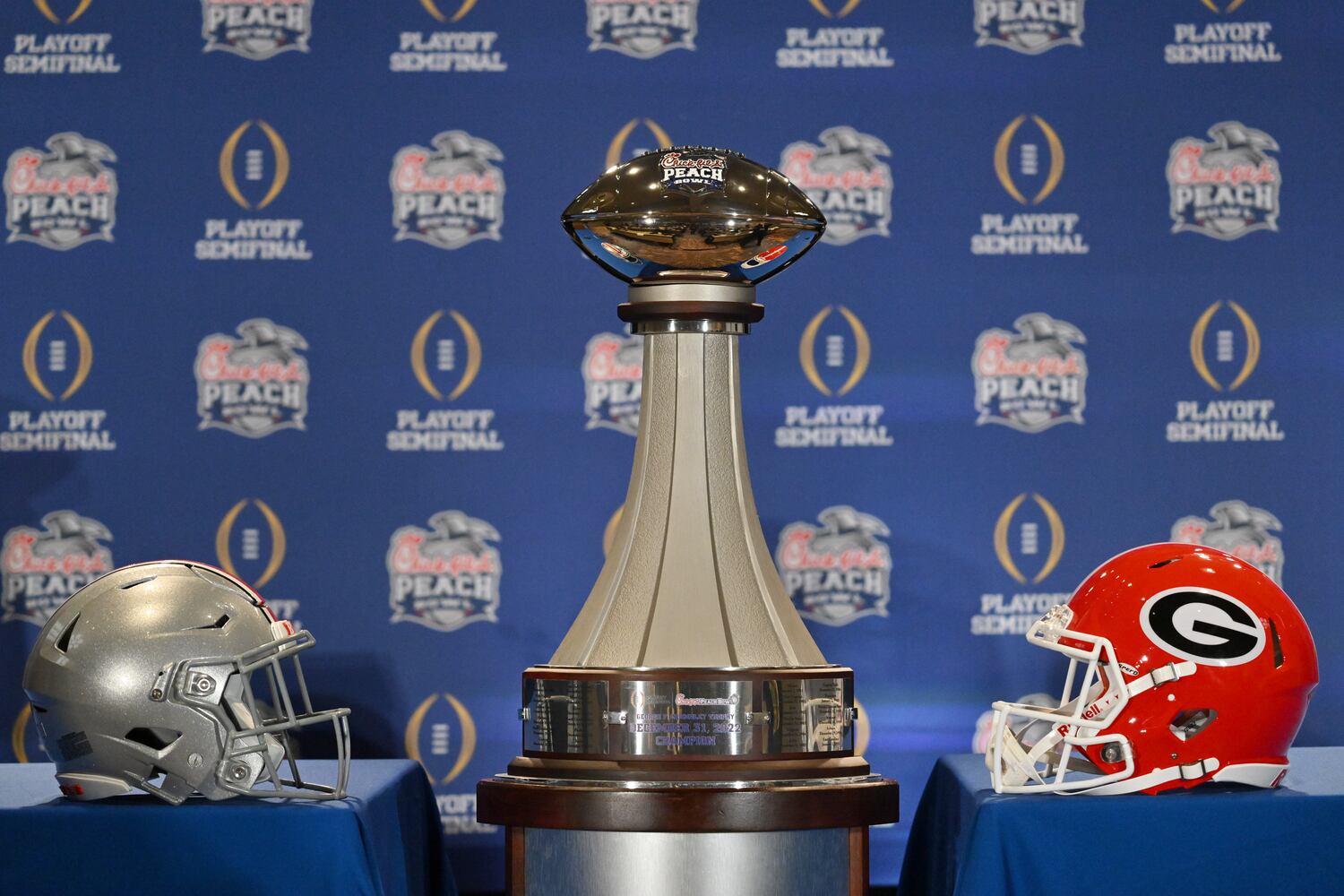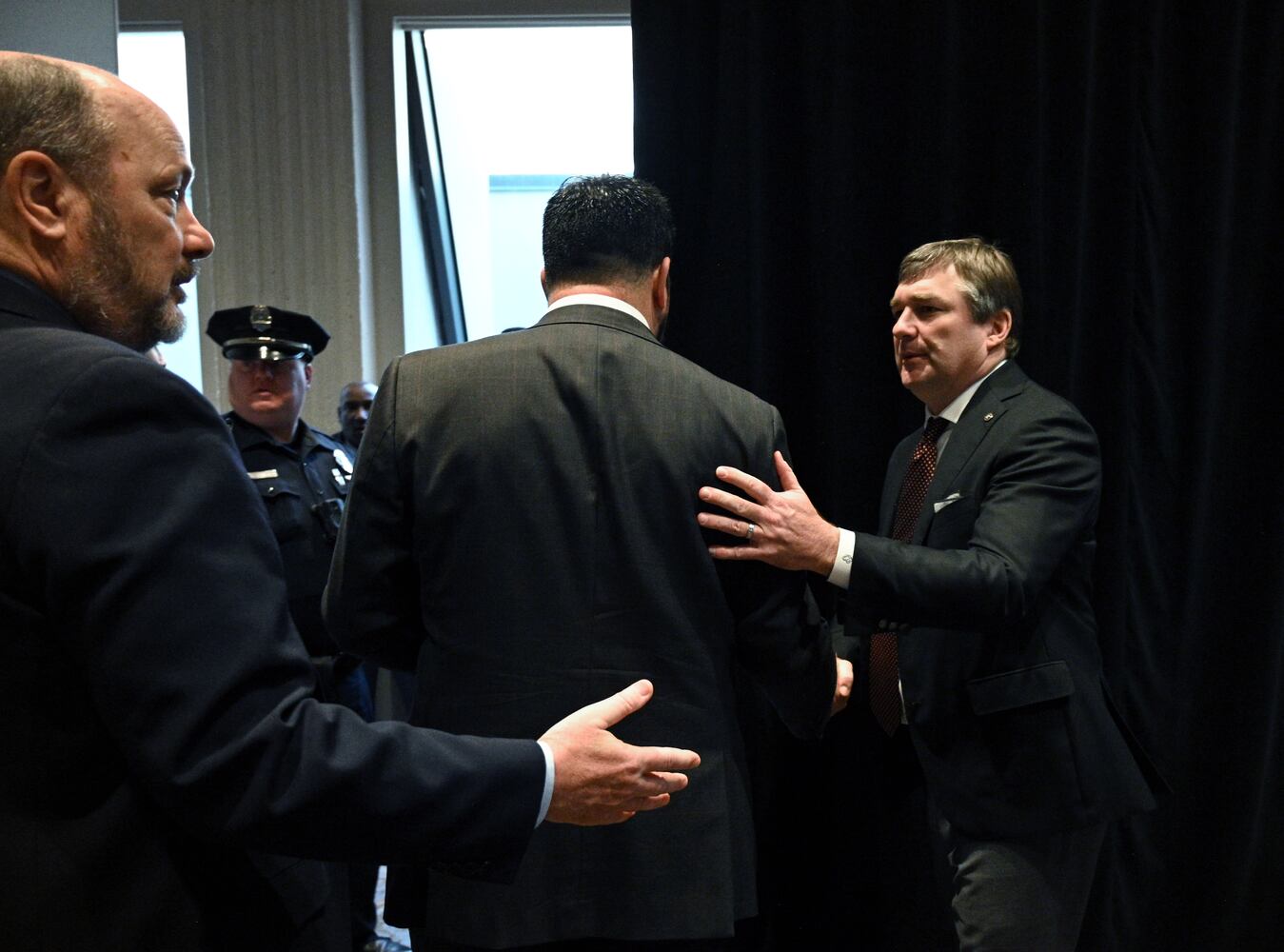The Peach Bowl, which this year will feature No. 1 Georgia vs. No. 4 Ohio State in a College Football Playoff national semifinal, wasn’t always one of the most important games in college football. It wasn’t always an economic driver. It wasn’t always appointment viewing.
The Peach Bowl was once so unimportant that in 1985 it was about to be pitted.
Army defeated Illinois 31-29 in a monsoon, which seemed typical for the game, at Fulton County Stadium on Dec. 31. Mud caked the field. Less than 30,000 people braved the rain to attend because, why come to Atlanta from out-of-market for New Year’s Eve? The game didn’t turn a profit. It wasn’t the first time. The NCAA told Dick Bestwick, then the bowl chair, that it had one year to show that it could become .... something.
Bestwick met with Delta CEO Ron Allen, the incoming president of the chamber of commerce, and told him that if the city’s business community didn’t support the game, it was done. Allen pledged his support as well as $100,000. He also promised that those businesses who were Delta’s vendors would step up.
Like a well-crafted and well-executed play, it took more than that meeting to save the Peach Bowl. But it was the first step turning what was an afterthought, a secondary bowl that didn’t have a TV contract, didn’t have a lot of money to lure attractive teams, and didn’t have much interest within the growing city, into one of the sport’s most important hosts. It has grown from a game that tickets were freely given away to try to attract spectators into one that will become the first to host the national championship twice when it gets the game again in 2025.
“It would have been inconceivable back then,” said Bob Hope, who was tasked in the mid-80s with trying to convince the NCAA that Atlanta could support the game. “We had the Rose Bowl, the Cotton Bowl, the Sugar Bowl, the Orange Bowl and then everybody else. No one else was even close.”
As a 15-year-old, Michael Ladd attended the third Peach Bowl, played in 1970 between North Carolina and Arizona State in a snowstorm, yes a snowstorm, at Grant Field. The tickets were a Christmas gift so that he could watch his favorite Tar Heels player, Don McCauley.
Ladd said he had to walk up and down the stairs to continue to have some feeling in his feet. The weather got so bad they left at halftime.
“We almost froze to death,” said Ladd, who still has the weather-beaten ticket stub. “The Peach Bowl was such a tough experience because of the weather. It certainly didn’t advance the Peach Bowl. It was so damn cold. We had a really, really wet snow that was falling. It was just a tough experience.”
Ladd moved from North Carolina to Atlanta in 1985.
“I’ve enjoyed watching the growth of the Peach Bowl and becoming one of the standard-bearers,” he said.
The 1986 game featured Virginia Tech vs. N.C. State, a somewhat regional matchup. Announced attendance surpassed 53,000, an increase of almost 25,000 compared to the previous year.
There had been previous efforts to save the game. The stories are well-known: Tech coach Pepper Rodgers’ wife, who was a meteorologist at a local station, jumping in to sell tickets in 1978. Another was Hope putting together an impromptu New Year’s Eve party at Five Points in downtown that looked to be a bust 15 minutes before midnight because there were just a few people there but turned into a celebration featuring thousands.
Albert Tarica, who started with the bowl as a volunteer in 1969 and is its treasurer today, has been a part of the event’s growth. He said he thought the bowl was done when George Crumbley, who founded the game on behalf of the Lion’s Club of Georgia, suffered a heart attack. The bowl brought in Bestwick, who served as the chair for one year before being hired by Vince Dooley at Georgia, with convincing Allen and Delta to save the game.
“It’s been a fun experience for me watching it grow and having fun with the families who have been volunteers with me,” he said.
Delta becoming the title sponsor was the first step.
“That propped the Peach Bowl up and then we were off and running,” said Gary Stokan, the bowl’s current CEO president.
In 1991, ESPN signed to broadcast the bowl, which gave it national credibility.
In 1992, the bowl and the SEC and ACC signed contracts agreeing to an annual matchup between its teams, which gave it regional interest.
In 1993, the game moved into the Georgia Dome, negating the poor weather that plagued the game.
In 1996, Chick-fil-A became the title sponsor, giving the bowl game fiscal resources. It is the longest-running title sponsor in bowl history.
“It goes back to people in this community understanding that there was going to be a commitment to sports,” Stokan said. “If Ron Allen doesn’t do that, we might have been out of business. If Truett Cathy doesn’t step up, we would not be where we are at.”
In 2014, it was added by the College Football Playoff Committee to become one of the “Big Six” bowls, joining those that it once envied. It hosted a semifinal for the first time in 2016.
In 2018, with the Georgia Dome imploded, the game moved into the state-of-the-art Mercedes-Benz Stadium.
“It’s a reflection back to the community and to the state,” Atlanta Sports Council President Dan Corso said. “You have to have a lot of things come into place, not just for the Peach Bowl but a lot of events that call Atlanta home.”
About the Author
Keep Reading
The Latest
Featured
